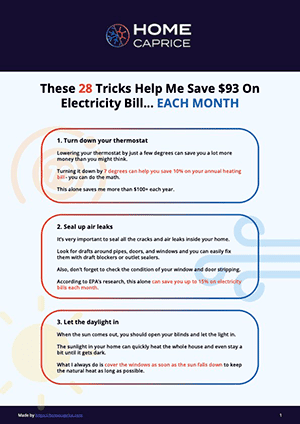Every owner of a kerosene heater came across a weird smell and odor at least once.
It isn’t unusual, and you don’t have to be scared or frustrated about it – I’ve been through it many times already.
Kerosene heaters start producing odor because they are chemistry-related and have much to do with molecules (I will simplify it later in the article).
Now, let’s talk about how to obliterate any foul smell.
How To Stop Kerosene Heater From Smelling (9 WORKING TIPS)
1. Clean-aged kerosene
Like many other things, kerosene starts smelling after being stored for a long time – especially if not done correctly.
You might have heard “money-saving” tips to save old kerosene. While it can still burn, I don’t recommend it because it will produce an irritating smell.
In my opinion, you should always use new and fresh kerosene.
If you plan to use old kerosene, you should at least filter it to reduce the smell.
Suggested: Take a look at how to use a kerosene heater indoors safely.
2. Change the wick level
If the wick is turned too low, you’ll notice a kerosene smell because it isn’t being burned correctly.
What works best for most people is adjusting the wick height to half an inch above the top of the burner. Still, you should check the user manual to see the recommended size.
3. Burn outdoors
After storing your kerosene heater over the summer, it collected a lot of dust and dirt.
To avoid the weird smell, burn your kerosene heater outside for at least 15 minutes before returning it.
In this way, you burn all the dust and dirt that produces the smell.
4. Use only K-1
If you’re unfamiliar with kerosene, there are two grades: 1-K and 2-K.
1-K is the highest quality kerosene on the market, with a maximum of 0.04% sulfur, while 2-K has slightly lower quality.
1-K kerosene is also the purest and smells different from the other grades.
Kerosene heaters are usually compared to propane heaters.
5. Stabilize the burner
Sometimes, when the burner isn’t stabilized, it can produce a lot of smoke followed by a weird smell.
You should always check if your burner is in line with everything else, and you have to make sure it isn’t easily moveable.
6. Clean the oil tank monthly
When your heater isn’t cleaned for a while, it will produce a smell no matter what kerosene you use.
Even if you always use fresh kerosene, it will still smell because the fuel tank wasn’t cleaned.
You should pour water into your reservoir until it’s clean – you can even use a bit of detergent to remove all remaining debris.
7. Replace the wick
Over time, the heater’s wick can become “old,” and you might need to clean or completely replace it.
Trimming the wick is also helpful and can be enough to remove debris and dust. However, it would be best to consider buying an utterly new wick.
8. Adjust the exhaust cover
When your venting cover is missing, it won’t let your kerosene heater operate correctly.
Oxygen will escape and won’t mix thoroughly with the gaseous phase, which will drain more fuel and waste it instead of using it efficiently.
Not only that, but it will decide whether your heater produces an unusual scent.
Make sure your vent cap is covered completely.
9. Buy a new kerosene heater
Sometimes, when your kerosene heater is ancient (or just poor quality), any trick you try won’t be effective in the long run.
It might be time to look for a new kerosene heater with all the features you need, made from a high-quality material that won’t start producing weird smells soon.
If you’re interested in the best kerosene heater on the market, you should look at the Sengoku Kerosene Heater.
Why Does My Kerosene Heater Smell?
Kerosene requires oxygen to be burnt because it’s higher carbon petroleum.
Although it might sound simple, carbon requires an exact number of oxygen molecules to be appropriately split and produce heat while burning.
The biggest problem is that the amount of carbon rises after burning for a couple of months (or years) while oxygen starts lacking.
Because of this, petroleum vapor starts causing odor and weird smells.
You won’t ever feel a kerosene heater smelling in an open space, but you might start noticing odors in a closed room (such as your home).
If you’re not a fan of your kerosene heater, we recommend looking at the most energy-efficient space heaters.


Download this FREE cheat sheet to find 28 tricks that can help you save on your electricity and heating bill each month.
Click here to get a FREE Cheat-Sheet


![Best Office Space Heater [Expert Buyer’s Guide]](https://homecaprice.com/wp-content/uploads/best-office-space-heater-768x512.png)
![Best Way to Heat Your Garage [12 Top Options]](https://homecaprice.com/wp-content/uploads/best-way-to-heat-your-garage-768x512.png)